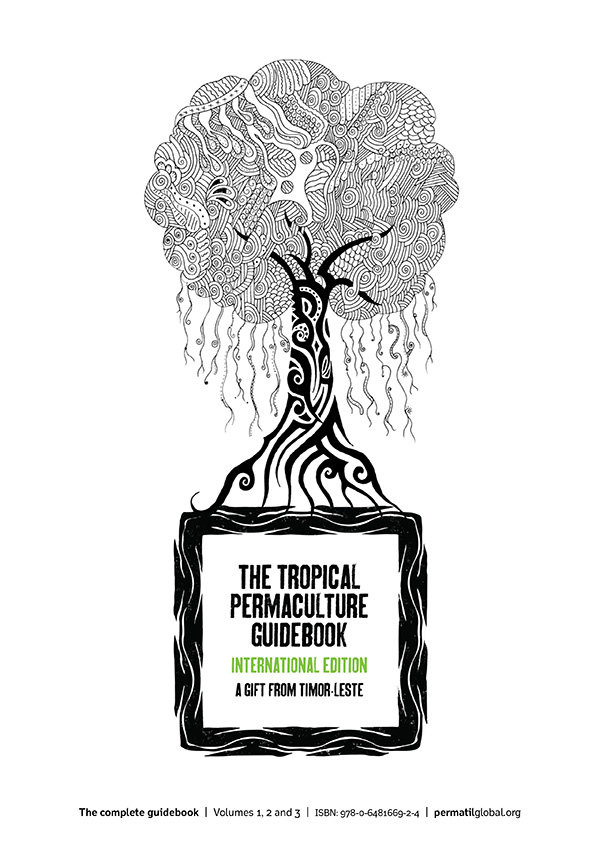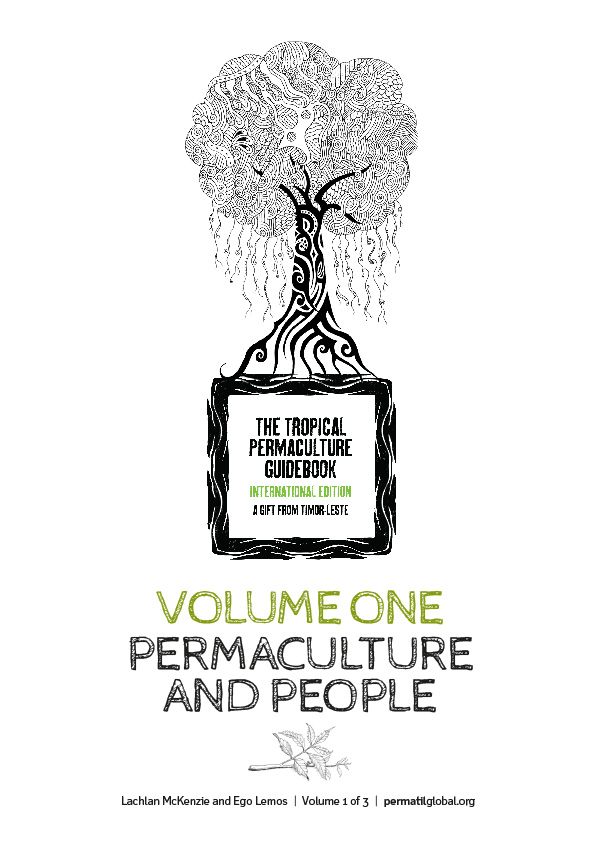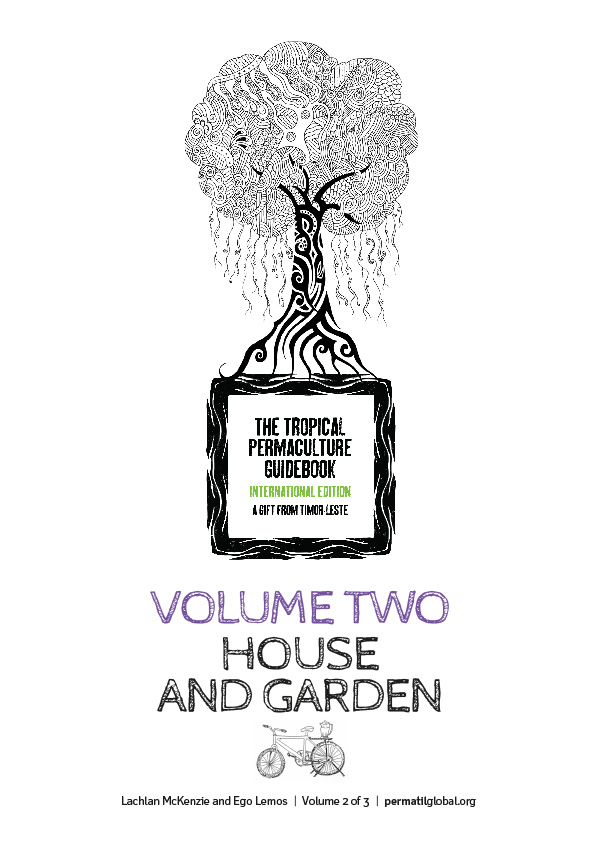Shop
The Tropical Permaculture Guidebook – Complete
1,111 pages
The Tropical Permaculture Guidebook is a comprehensive resource of permaculture design, food sovereignty and environmental regeneration strategies… more
The complete book is available in two sizes:
87.1MB (slow internet connection)
196.1MB (fast internet connection)
The Tropical Permaculture Guidebook is a comprehensive resource of permaculture design, food sovereignty and environmental regeneration strategies.
It creates the framework pattern of permaculture design from a typical tropical community perspective, then provides the detail of how to actually achieve it with step-by-step technical detail in word and image.
The guidebook is divided into three themed volumes, making it easier to read and reference.
Each volume contains a table of contents, foreword, introduction, six chapters, glossary and reference section. Please read How to use the book page or the volume and chapter descriptions for more detailed information.
Together the chapters and volumes create a complete guide for understanding permaculture and how it can be used for all aspects of life. Its context is the tropics but most of the information can easily be adapted for other climates and cultures.
Our core ethos and vision for this guidebook is to provide practical knowledge that can be used by anyone, especially poor and vulnerable communities. It has clear simple text combined with over 2000 rich and detailed illustrations that enables readers with low literacy levels to understand and even use this guidebook as a literacy tool.
We are also critically conscious that climate change will hit the tropics and especially the most vulnerable very hard. This guidebook can help create lifestyles that contribute to environmental regeneration and provides resilience and pro-active adaptability in facing climate change and our other global challenges.
Volume 1: Permaculture and People – 304 pages
- Ch 1: Permaculture ethics and principles
- Ch 2: Natural patterns
- Ch 3: Permaculture design strategies and techniques
- Ch 4: Urban and community permaculture
- Ch 5: Cooperatives
- Ch 6: Trainers’ guide
Volume 2: House and Garden – 376 pages
- Ch 7: Houses, water and energy
- Ch 8: Food, health and nutrition
- Ch 9: Soil
- Ch 10: Family gardens
- Ch 11: Seeds and propagation
- Ch 12: Plant nurseries
Volume 3: Regenerative Agriculture – 431 pages
- Ch 13: Sustainable agriculture
- Ch 14: Integrated pest management (IPM)
- Ch 15: Trees
- Ch 16: Bamboo
- Ch 17: Animals
- Ch 18: Aquaculture






